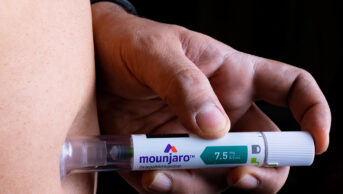
Shutterstock.com
Results from a study of adolescents supports the use of body mass index (BMI) measurement as a helpful tool for detecting the metabolic and cardiovascular effects of obesity.
The research, published in the Journal of the American College of Cardiology (18 December 2018)[1]
, looked at 2,840 children whose BMI was measured alongside measurements of trunk, arm, leg and total fat indices by way of dual-energy X-ray absorptiometry at ages 10 years and 18 years.
The team found that higher BMI and total fat mass index at the age of 10 years were similarly associated with over 200 cardiometabolic traits at the age of 18 years, including higher systolic and diastolic blood pressure, higher low-density lipoprotein cholesterol, higher triglyceride levels and higher insulin.
The results were similar when they looked specifically at trunk fat index, which has previously been strongly linked to coronary heart disease risk.
The team said that in recent years the utility of BMI, which is derived from an individual’s mass and height, had been questioned, owing to its inability to distinguish between fat and lean mass, and the fact that it ignores fat distribution.
“Our study asked how useful it really is for detecting the health effects of obesity by pitching it against more objective body scan measures,” said lead author Joshua Bell from the University of Bristol.
“We found that trunk fat is the most damaging to health, but that simple BMI gives very similar answers to more detailed measures.”
References
[1] Bell J, Carslake D, O’Keeffe L et al. Associations of body mass and fat indexes with cardiometabolic traits. J Am Coll Cardiol 2018;72:3142–3154. doi: 10.1016/j.jacc.2018.09.066


